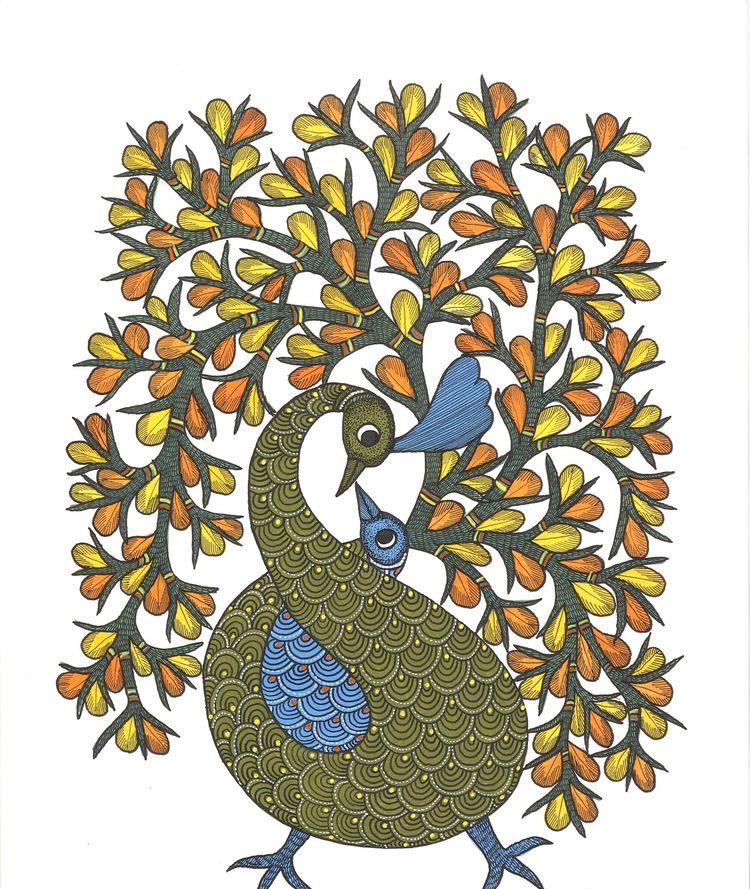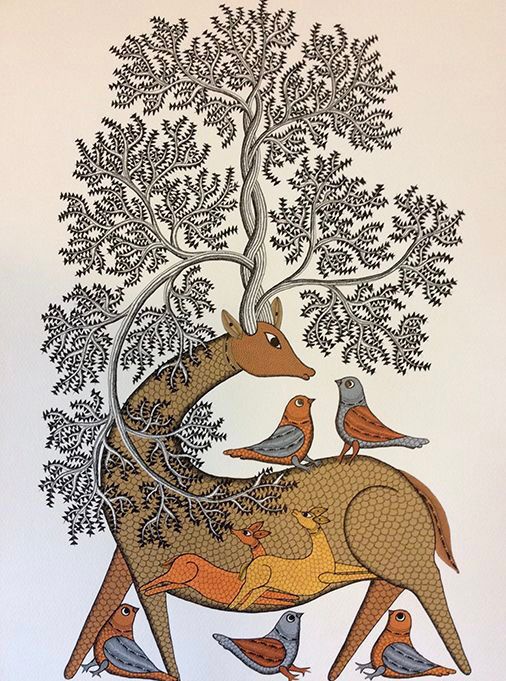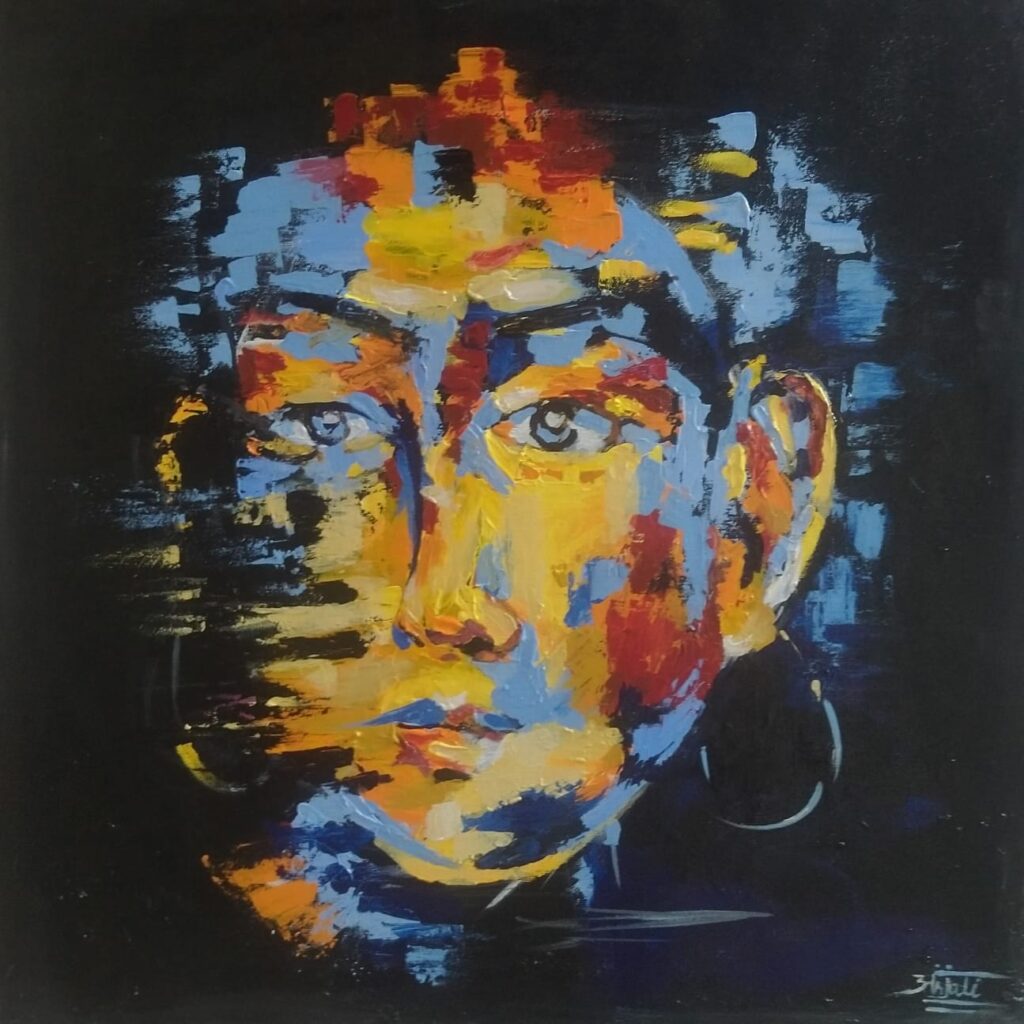Art has an innate power to bridge cultures, carry stories, and express the essence of a community. One such mesmerizing art form that resonates with this spirit is Gond art. Originating from the tribal heartlands of Madhya Pradesh in India, this art is an embodiment of storytelling through intricate patterns and vibrant colours. Let’s embark on a journey to understand the roots, elements, symbolism,
and cultural resonance that define Gond art, while also exploring its harmonious connection with music and its striking similarity with Aboriginal art.

A Glimpse into the Origins:
Gond art finds its roots in the Gond tribal community, a group deeply connected to nature and rich in cultural heritage. The term “Gond” is believed to have been derived from the Dravidian expression “Kond,” which means green mountains. The Gonds have historically inhabited the regions of central India, primarily Madhya Pradesh and parts of Chhattisgarh.

Where Gond Art Flourishes:

This art, with its distinct patterns and narratives, flourishes in the heartlands of its origin. It adorns the walls, floors, and lives of the Gond tribe, encapsulating their cultural ethos and everyday life. Over time, this art has transcended its local origins to capture the fascination of the global art community.
Elements, Stories, and Symbolism:

Gond art is a tapestry of intricate dots and lines that come together to create vibrant and captivating patterns. The canvas breathes with stories from Gond mythology, folklore, and daily experiences. Animals, birds, and elements of nature often take centre stage, echoing the Gonds’ intimate relationship with their surroundings. Each motif holds symbolic significance, infusing the art with layers of meaning that resonate with both the Gondi people and the observers.
Gond Art: A Visual Symphony and a Musical Connection:

The enchantment of Gond art goes beyond visuals; it merges with the world of music. In the Gond community, the “Gondi” language and culture have inspired a tradition of folk songs and musical performances. These melodic expressions parallel the vibrant energy and narrative depth found in this art. Together, they create a symphony of cultural continuity.
Aboriginal Art and Gond Art: A Shared Essence:
Interestingly, Gond art shares resonances with Aboriginal art found in Australia. Both art forms hold an innate connection to nature, feature intricate patterns, and use symbolism to convey stories of the land, animals, and ancestral wisdom. This striking similarity transcends geographical boundaries and showcases the universality of human expressions.
In conclusion, Gond art is not merely an artistic expression;
it is a repository of stories, heritage, and the Gond tribe’s reverence for life. As we delve into the intricacies of art, we journey into the heart of a community that weaves its narrative through patterns and colours. Through this art form, the Gondi tribe invites us to connect with their worldview and heritage, fostering an appreciation for the rich diversity of human creativity.








Pingback: Whispers of Emotion: Abstract Canvases Speak - The haat of art
Pingback: Acrylic Art: Where Colours Emerge with Vibrancy and Versatility - The haat of art
Pingback: Knowing the Essence of Oil Painting: A Canvas of Advantages - The haat of art
Pingback: Sculpture Art: Breathing Life into Stone, Metal, and More - The haat of art
All the art forms are so beautiful, an Artist put their heart in making an art piece, which brings colour to every room. Let’s celebrate these beautiful colours which immensely says something about our lives & thoughts. Myself Ramandeep Kaur Sethi from ‘Love The Colours Of Life’ eagerly announces the upcoming art festival hosted by THOA. Congratulations And Good Luck to my Fellow Artists 👩🎨
Thank you for giving us your appreciation; it motivates us.